
Kenya troll yellowfin tuna

Location & History
Located on the east coast of Africa, this fishery targets mostly yellowfin tuna and generally harvests larger fish in the northern section of the Kenyan coastline. Off the coast of Kenya, running nearly all the way down the edge of the country is a coral reef system. The reef, and all the wildlife that it supports, provides a perfect habitat for tuna species to thrive.
How is the Tuna Caught?
Most small-scale fishers targeting tuna in Kenya operate from small fibreglass vessels while using one-by-one troll fishing techniques. These methods typically catch fast growing, surface level fish species, such as yellowfin and skipjack tuna. Unlike larger-scale troll fishing that uses artificial lures on barbless hooks at the back of the boat, this much smaller-scale fishery uses barbed lines. This assists them in catching particularly tricky fish and helps to prevent fish from escaping: more important at the smaller catch volumes seen in this fishery. These lines are pulled at a slow speed through the water from varying lengths of line that are attached to rod and reel gear, rather than the back of the boat as seen in larger scale trolling. The disturbance of the surface waters caused by the dragging, resembles the movements that small fish make and attracts the tuna to the lure. When a tuna is caught, the fisher hauls in the line and removes the tuna, returning that same hook and line to the water.
The high selectivity of these fishing gears mean that professionalised local tuna fishers catch mostly yellowfin tuna while not impacting non-target species (also known as bycatch) such as dolphins, turtles or sharks.
Unique Features
Kenya is still developing its small-scale tuna fisheries and, although they are only exporting small amounts of their catch, the fish they harvest provides important local employment opportunities when sold to local markets while also representing a primary source of protein for local communities.
Gallery
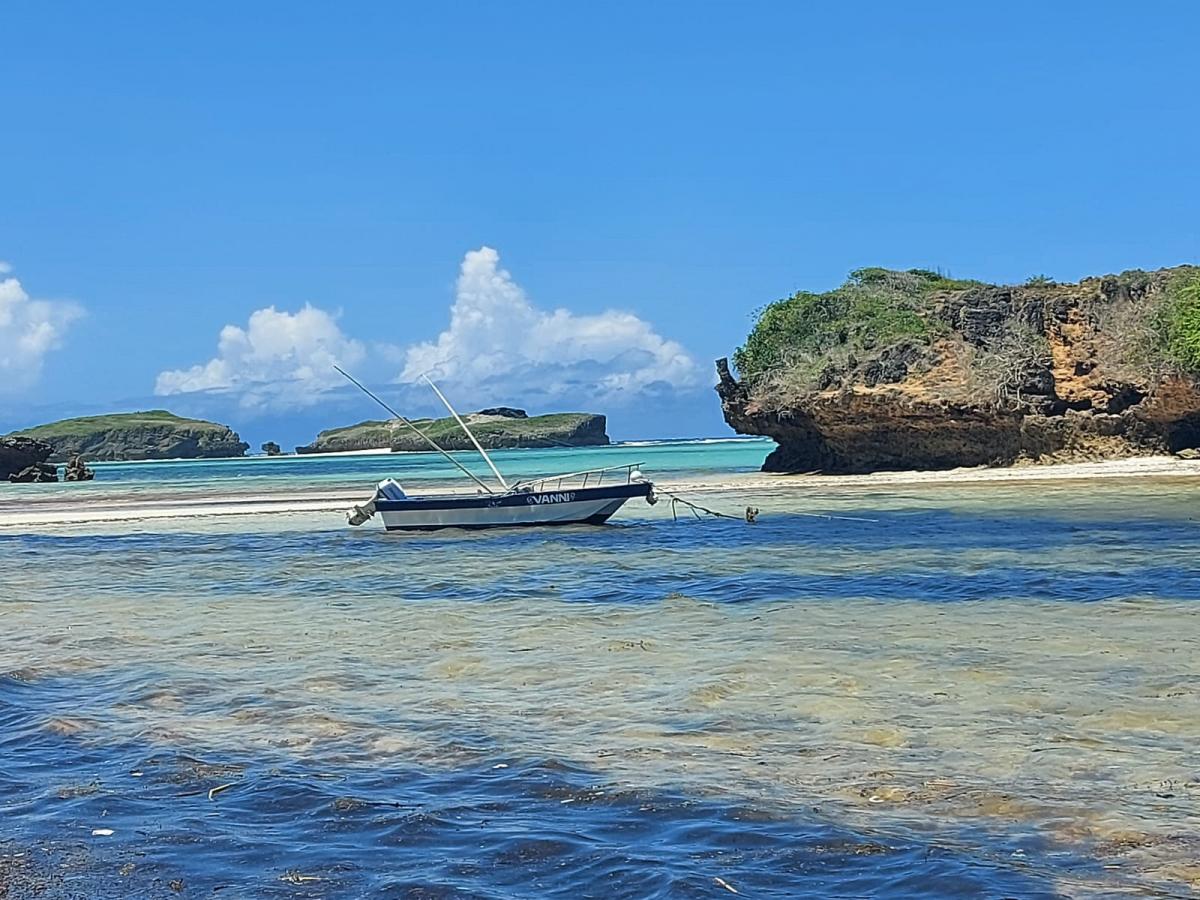
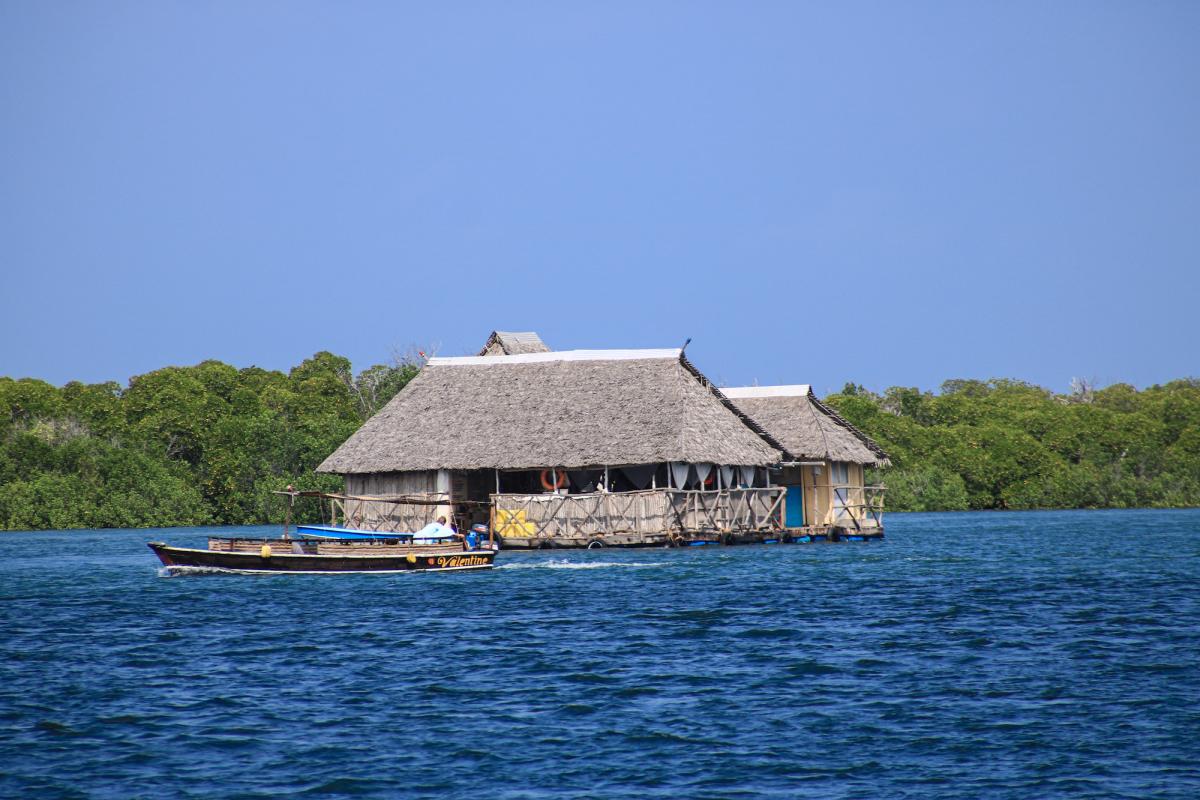
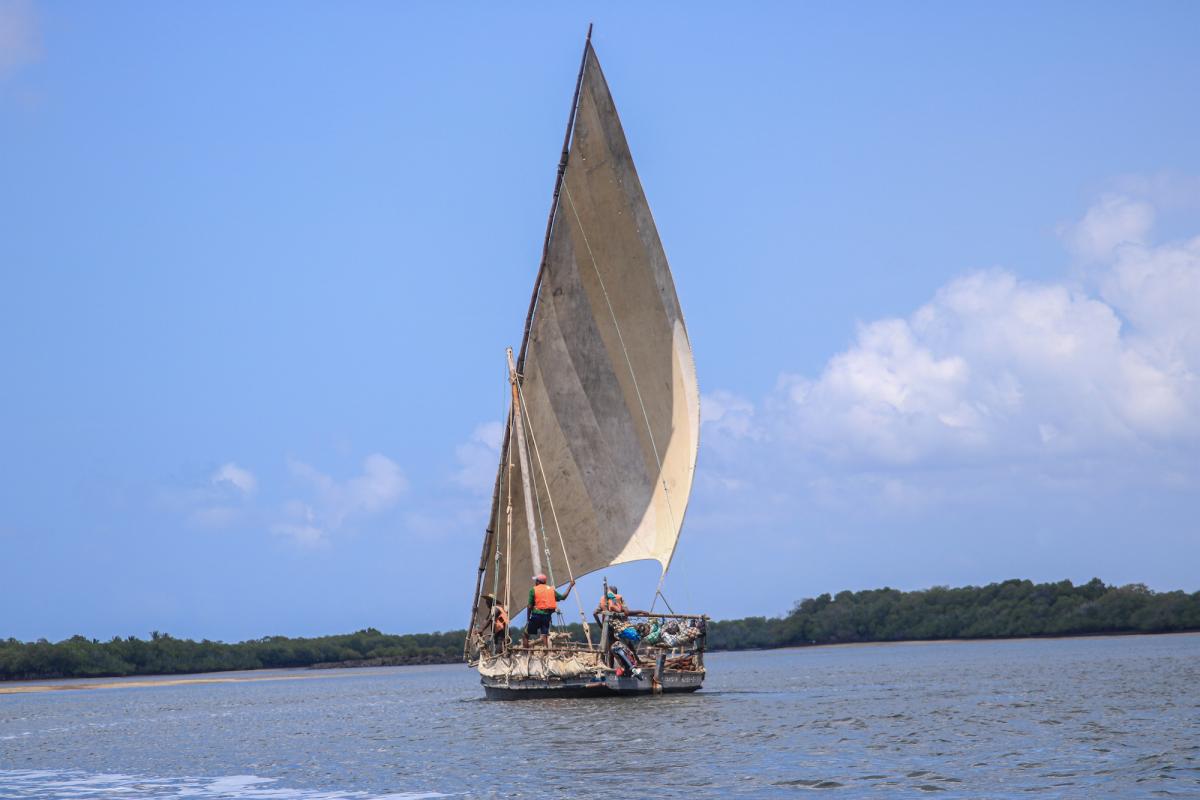
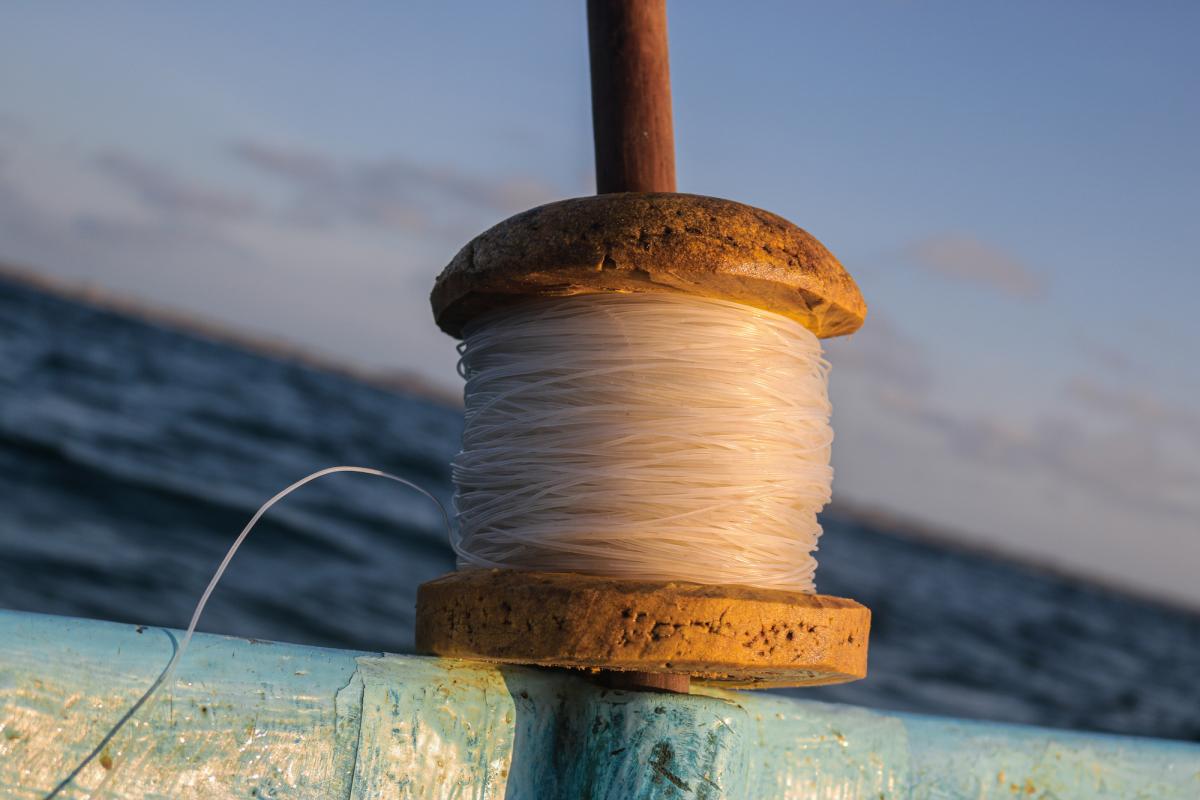
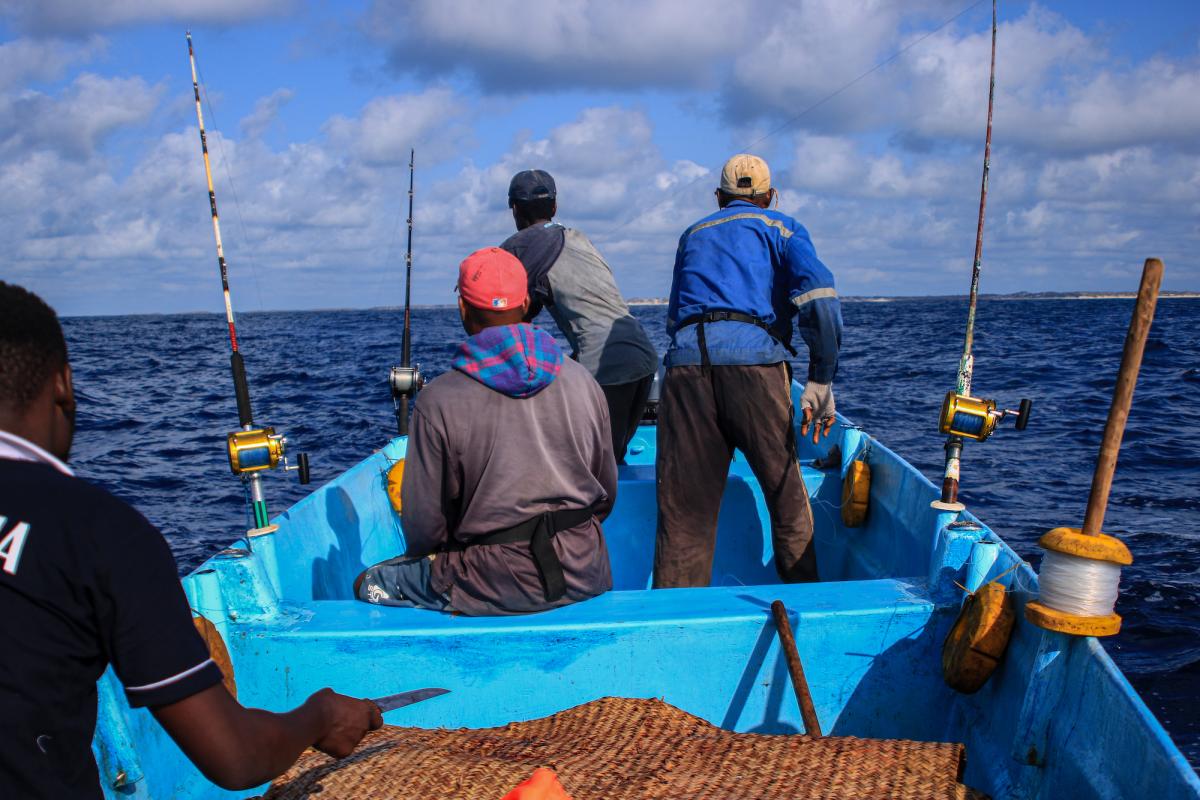
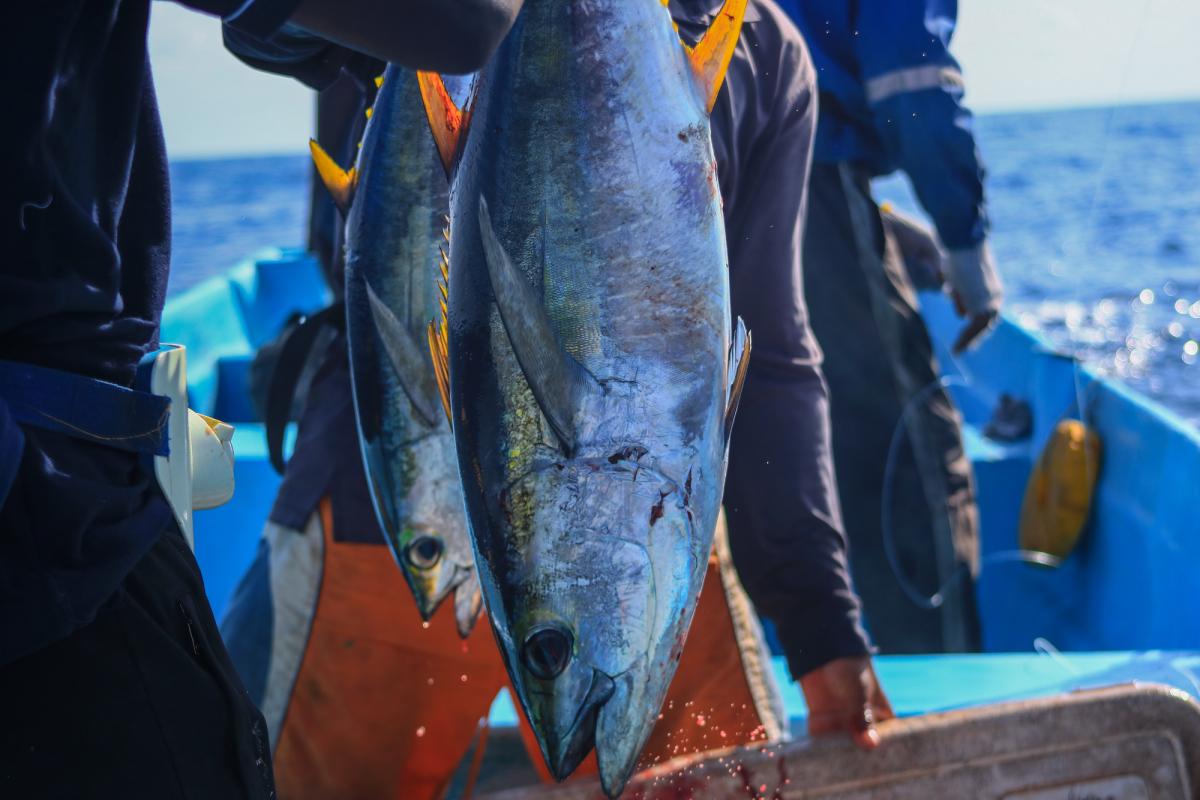
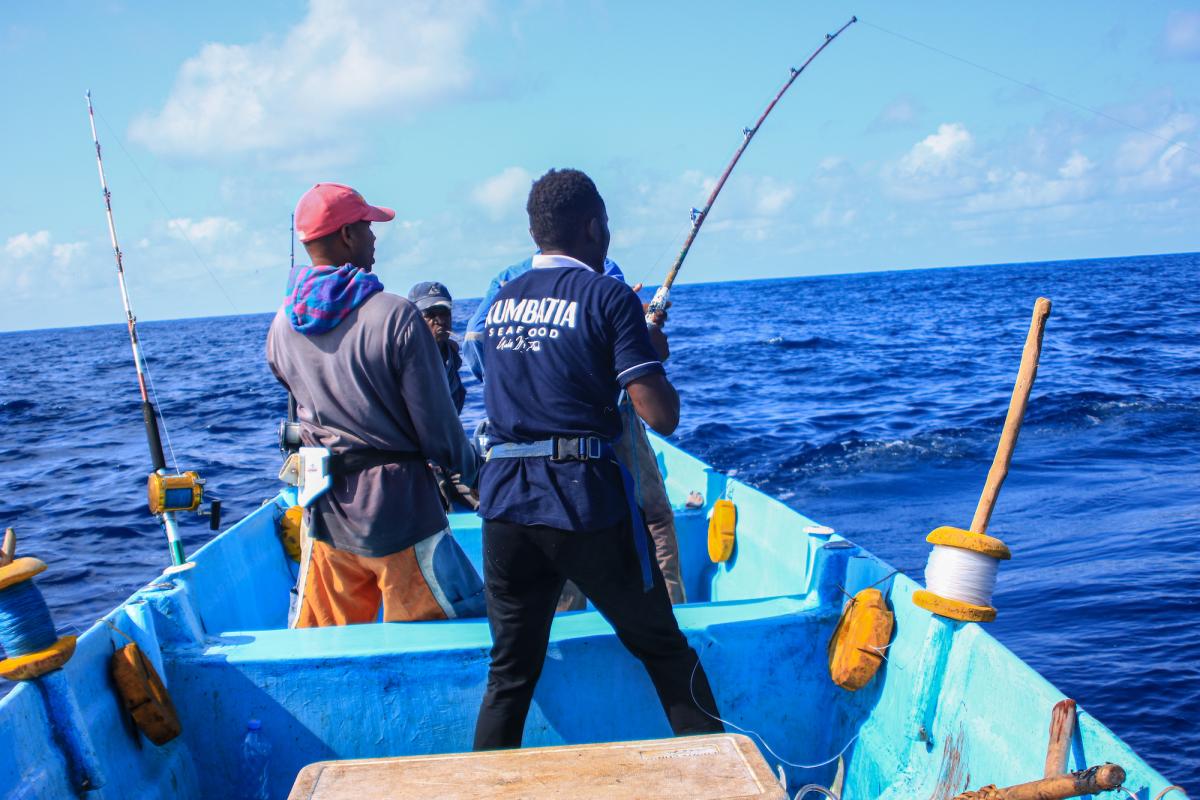
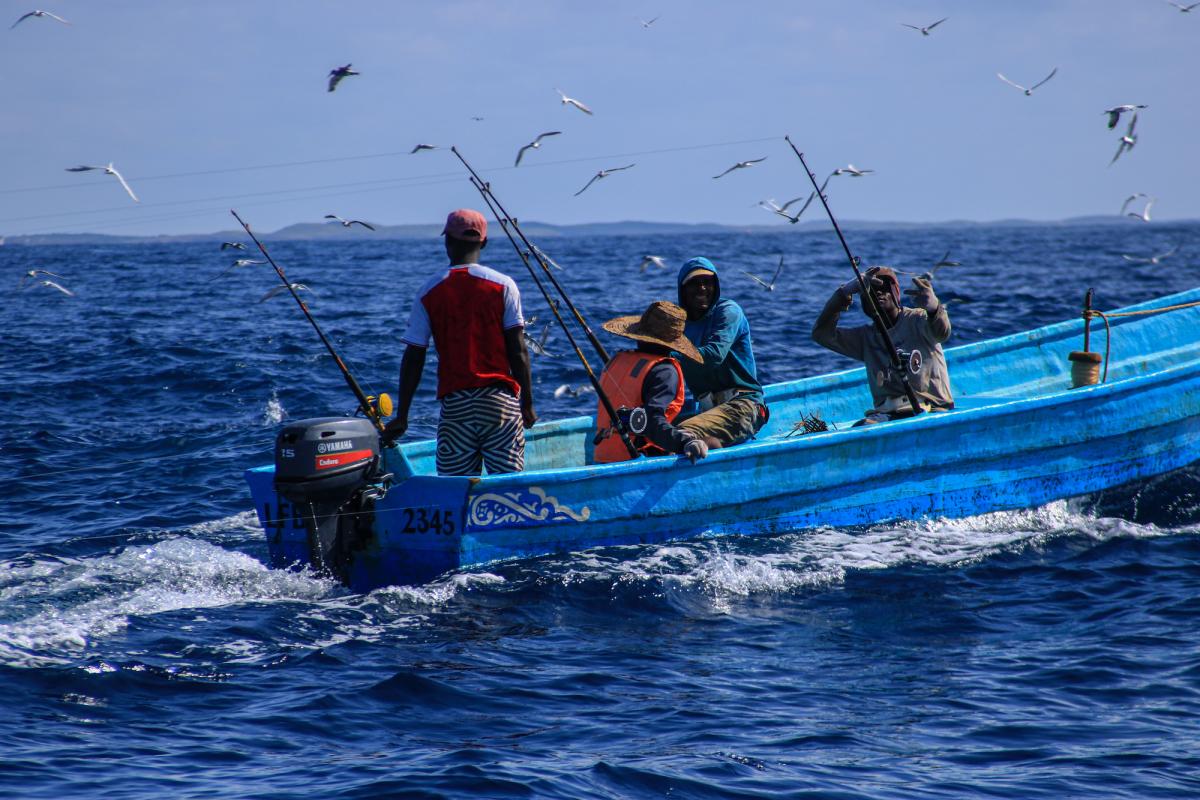
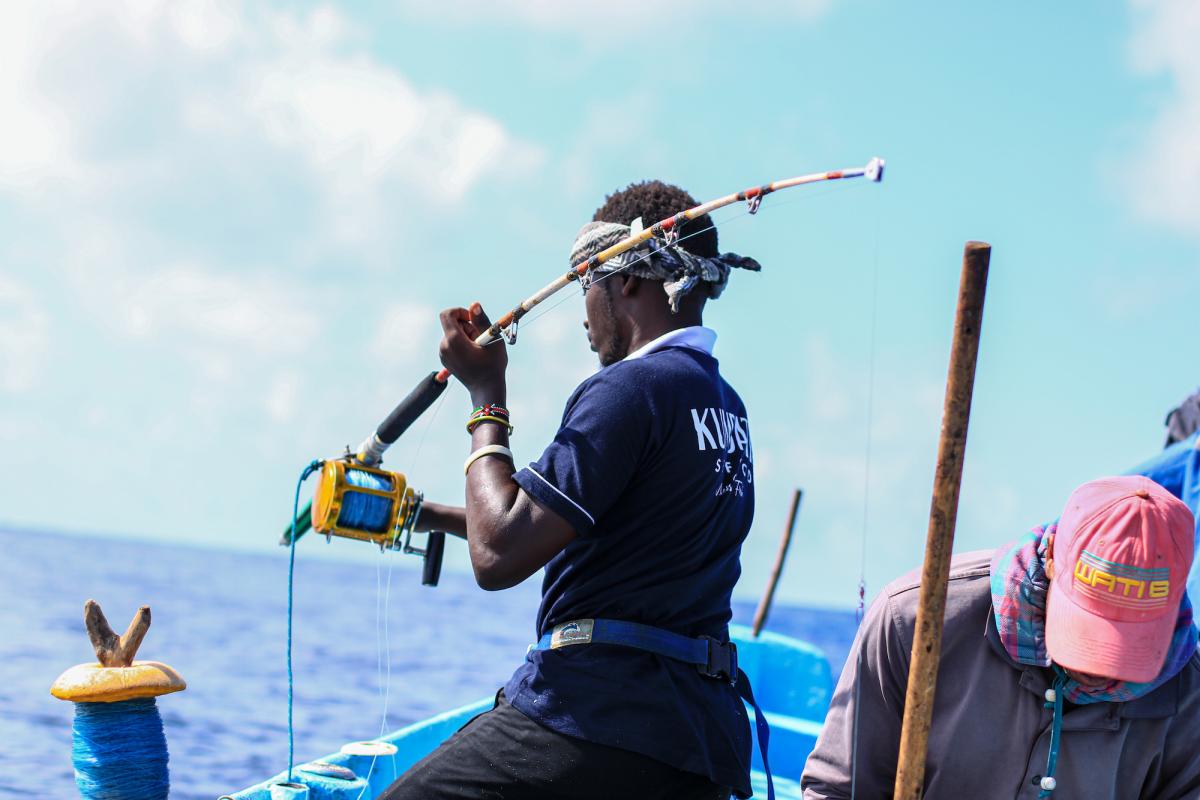
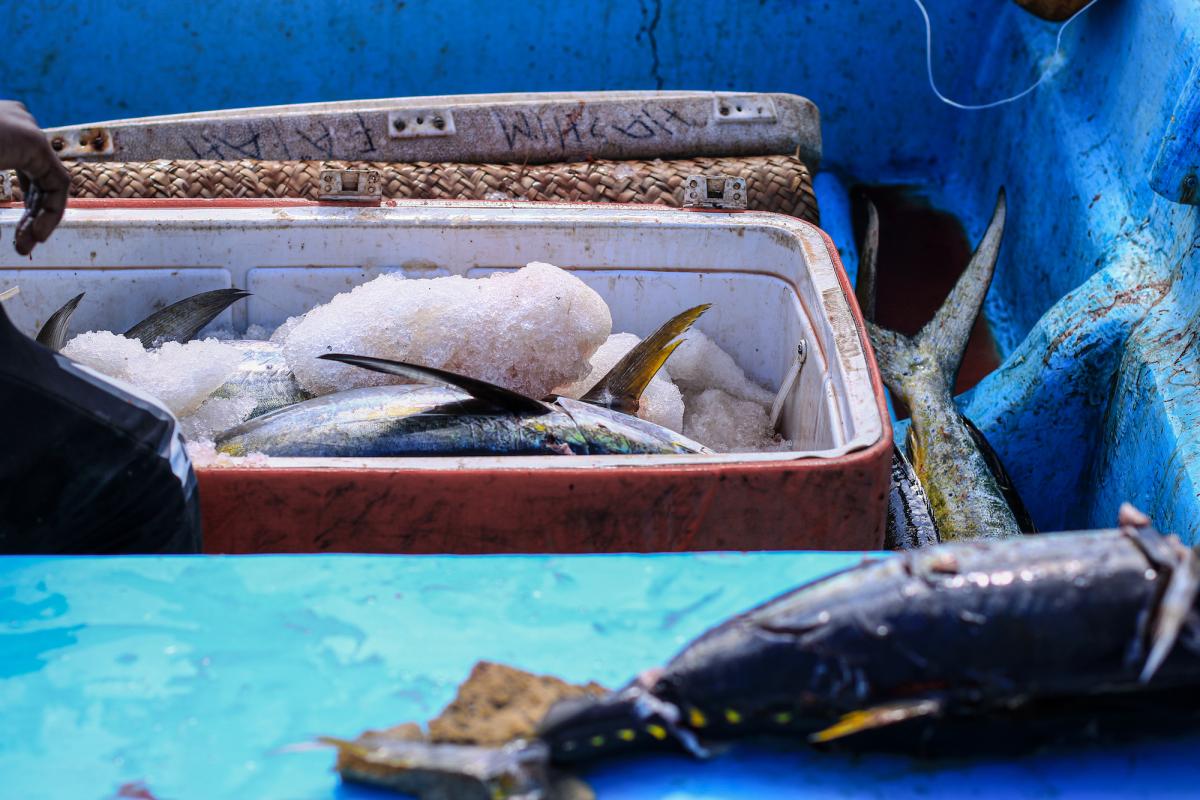
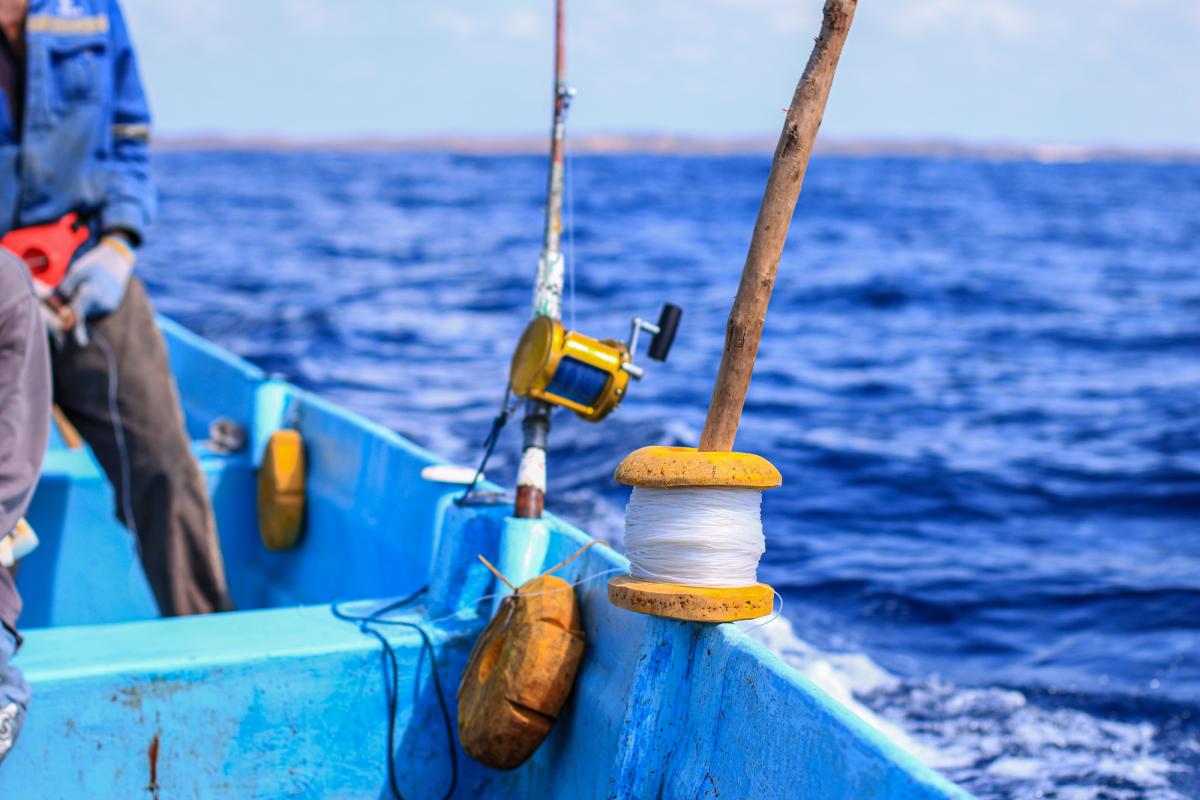
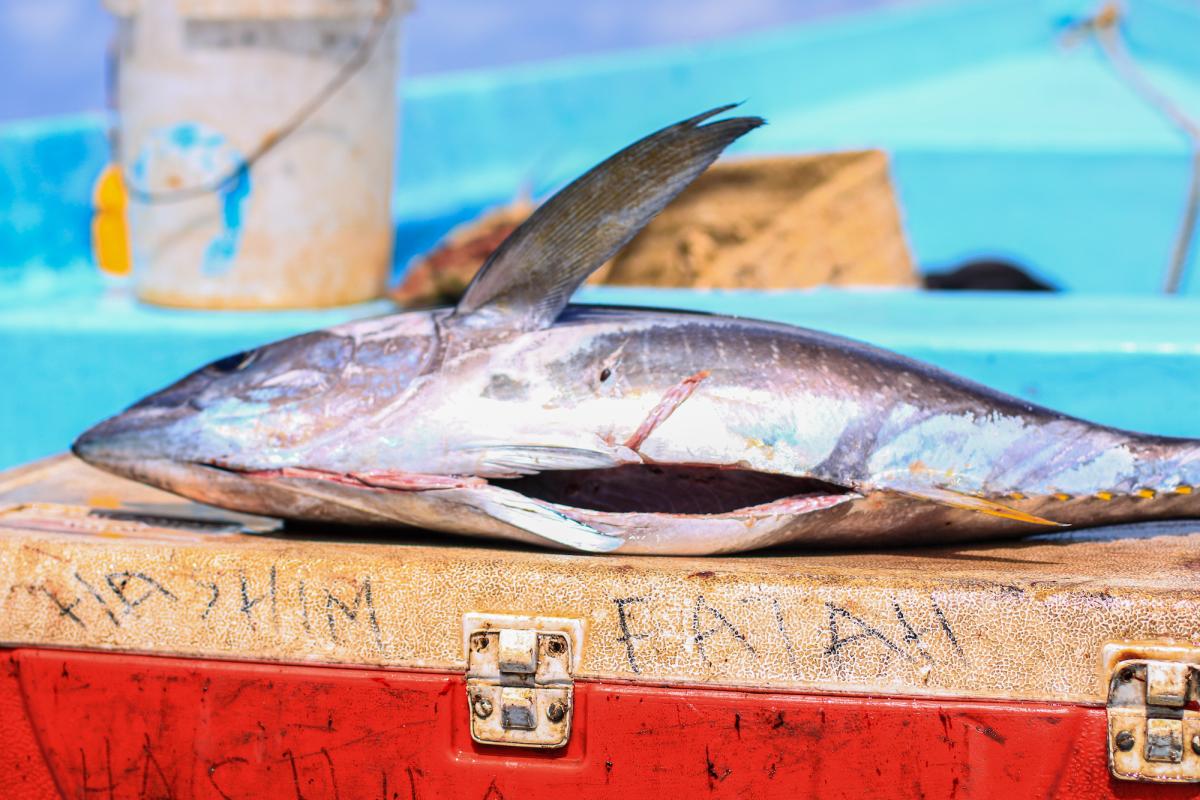
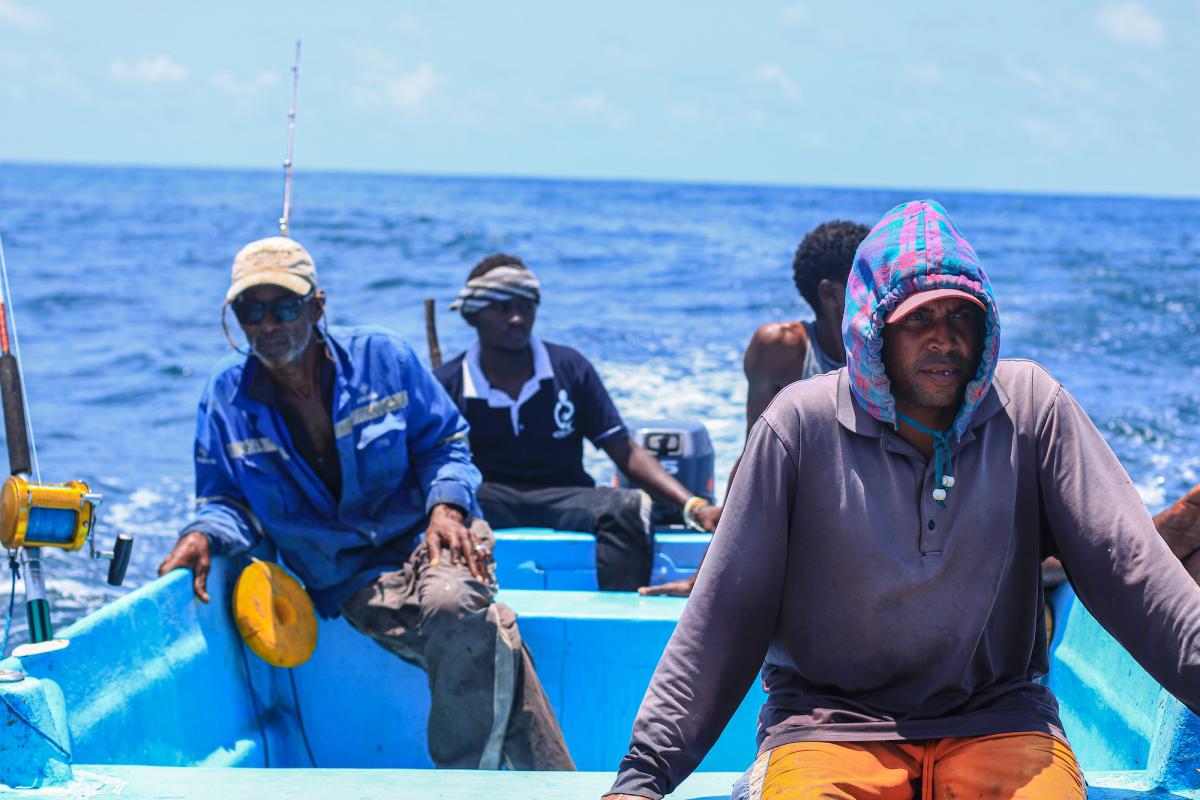
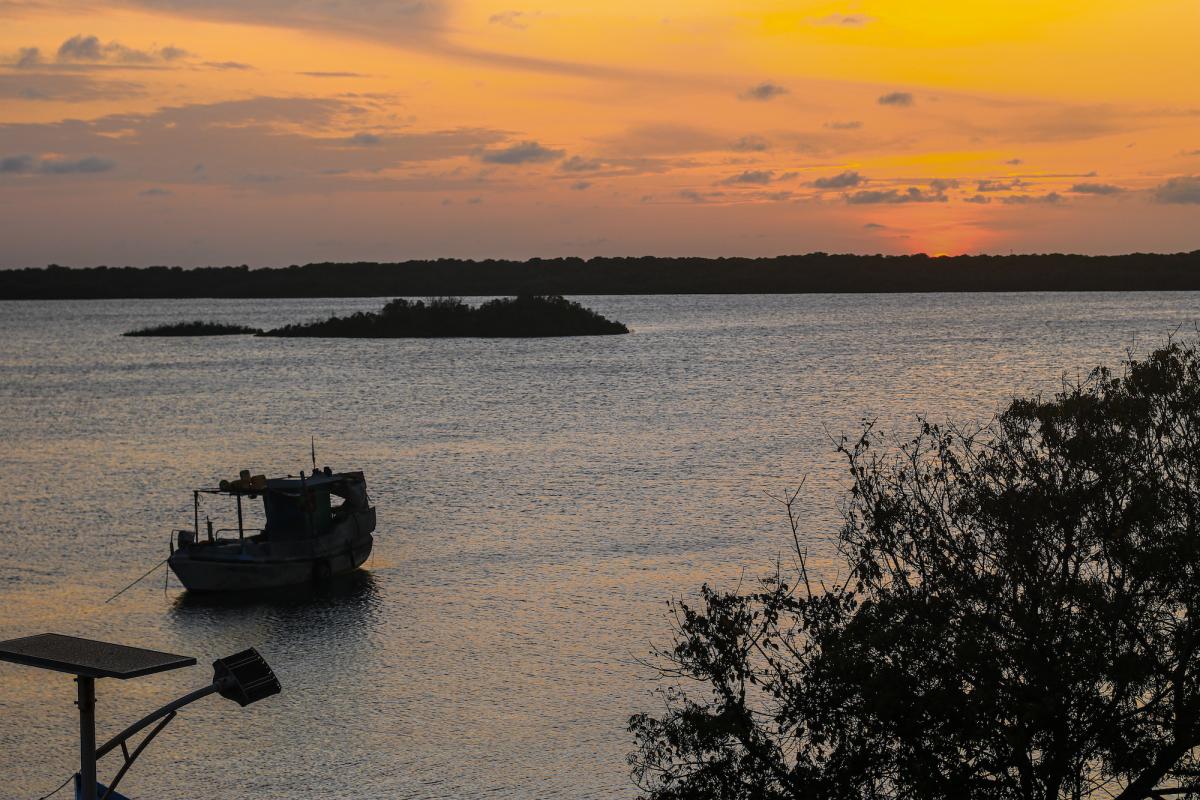

Typical Vessel
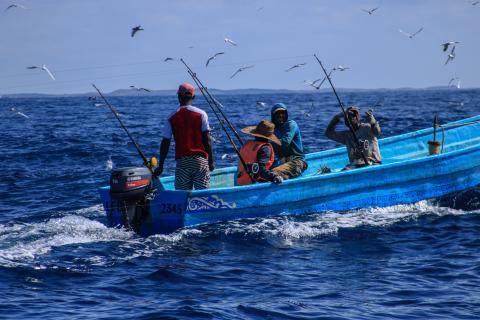
| Item | Value |
|---|---|
| Crew Size | 4 |
| Size Range(m) | 6-8 |
| Details of Type of Engine | Outboard, 15-40 horsepower |
| Hold Capacity | <1 tonne |
| Onboard Cold Storage? | Yes |
Target Species
Yellowfin Tuna
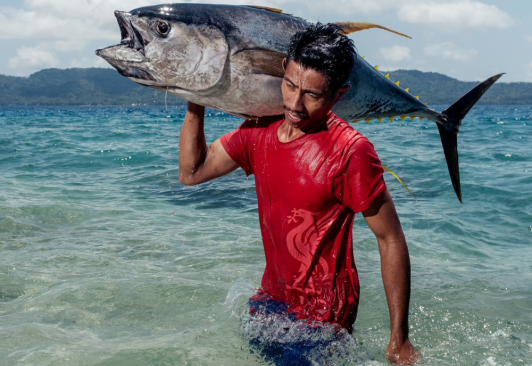
Fishing Gear
Trolling

Regional Fisheries Management Organisation
Indian Ocean Tuna Commission (IOTC)
Regional fisheries management organisations (RFMOs) are international bodies formed to manage fish stocks in an oceanic area. They include several countries with fisheries operating in that area, and some focus on particular species such as tunas. They are established through international agreements and treaties. RFMOs typically collect fishery statistics, assess fish stock conditions, monitor fishery activity and make fishery management decisions.
The Indian Ocean Tuna Commission (IOTC) is the RFMO responsible for managing tuna and tuna-like species (including billfishes and some sharks) in the Indian Ocean. Their main objective is to manage fish stocks, by ensuring fisheries operate sustainably, so benefits from relevant fisheries in the region can be maintained into the future.
